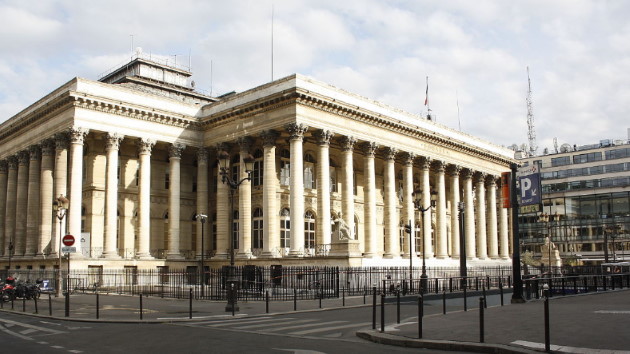(CercleFinance.com) – The CAC40 index (+0.2%) is holding firm above 7,250 but seems stuck between 0.2% and 0.3% since the opening.
The Euro-Stox50 symbolically emerges from the red (+0.1%) while Wall Street does better than remain in balance: the Dow Jones gains as does the CAC +0.25% and the Nasdaq surprises with +0 .7% and a score of 14,225 (the index thus fills its bearish ‘gap’ of 14,215 on August 1).
And the Nasdaq-100, boosted by the ‘fantastic 7’ which gained overall +73% this year, returned to its highest levels since January 5… 2022 (23 months).
NB: the capitalization of the ‘fantastic 7’ is equivalent to all non-American stocks listed worldwide (Japan + Europe, + China + United Kingdom, + South American stock exchanges, etc.).
Paris continues its momentum from November (+0.3% per day since October 26) and from the ‘3 witches’ session (the Parisian market ended Friday’s session with an increase of 0.9% to 7,234 points , i.e. a weekly increase of 2.7% which now allows it to gain more than 6% since October 20).
It is also the first session of a week which will be truncated by the American Thanksgiving holiday, a traditionally calm period for the financial markets.
Pay attention, however, to the publication of Nvidia’s results which are expected Tuesday evening after the close, but the upward potential of the stock seems limited given the 237% surge in the chip manufacturer’s stock price this year (and a PER of 115 to 145 depending on the calculation methods, which is astronomical even with huge profits as everyone expects).
‘We consider the bullish configuration of the moment fragile’, underline the analysts at Kiplink Finance, who note that while retaining at least its upward trend, the CAC 40 index still shows ‘febrileness’.
‘In the short term, the Parisian index is faced with a challenge area, that of stabilizing sustainably at 7,200 points to continue its positive streak,’ estimates the brokerage firm.
The Thanksgiving period, which will see the American markets close their doors on Thursday and only open for a shortened session on Friday, also seems not conducive to risk-taking.
Investors should avoid taking new positions, volumes are expected to be low and few elements appear likely to make the markets react.
Several indicators will also liven up the week, notably with the PMI index figures in the euro zone on Thursday, which should confirm the contraction in activity on the Old Continent.
In the United States, the Conference Board’s leading indicators, supposed to foreshadow the evolution of economic activity in the United States, continued to decline in October by 0.8% to 103.9, according to the Conference Board, which said see the prospect of a recession in the short term.
The ConfBoard expects that high inflation, rising interest rates and shrinking consumer spending will push the US economy into a ‘short’ recession.
According to the professional organization, the GDP of the United States should only grow by 0.8% in 2024.
Then, durable goods orders (Wednesday) will be the main statistics to watch in the coming days.
It remains to be seen whether the recent upward trend has prepared the ground for the famous end-of-year ‘rally’, or whether the stock markets are on the contrary ripe for a new episode of consolidation.
Some analysts say it is far from certain that markets will have a very positive end to the year, with current valuations making them vulnerable to bad news.
‘Valuations are probably the tightest we have seen this year, with rates this high,’ warn strategists at Lombard Odier Investment Managers.
On the bond compartment, the yield on ten-year Treasuries tends slightly by +2.5 points beyond 4.468% (despite the decline in the ‘Conf’Board’ indicator), but loses almost 50 basis points on one month, while the probability of a new rate hike by the Fed between now and the end of the year is now estimated at zero.
The differences observed in Europe are insignificant with +1.5 basis points on our OATs and on Bunds at 3.17% and 2.6130% respectively.
In this context, the euro continues its rise against the dollar (+0.1%), near 1.0920, establishing a new high since the end of August.
‘Hedge funds are currently positioned to buy the euro with a target of $1.10,’ note the teams at DeftHedge, a risk management specialist.
On the energy side, oil prices are trying to recover after four consecutive weeks of decline, Brent gaining 2.5% to $82.7 just like American WTI which is up 2.6% to $78.1.
‘Thursday’s sale looked like a movement of capitulation, potentially signaling a bottom of the wave,’ says Saxo Bank.
For the Danish bank, the collapse of crude oil will once again focus attention on the OPEC meeting, scheduled for next Sunday.
Copyright © 2023 CercleFinance.com. All rights reserved.
Did you like this article ? Share it with your friends using the buttons below.




